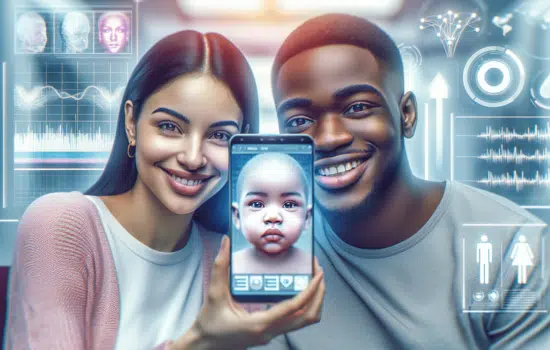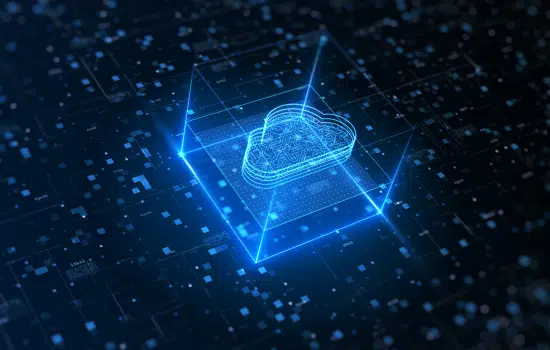Ads
Imagining what your future baby's face will look like is one of the most exciting experiences for expectant parents. Science and technology have advanced by leaps and bounds, and today it's possible to obtain a fairly accurate prediction thanks to genetic prediction apps.
This innovative resource not only sparks curiosity, but also offers a fun and fascinating way to contemplate the future.
Ads
As genetics continues to unravel its secrets, these apps have begun to gain popularity, becoming indispensable tools for those who want a glimpse of what fate has in store for them.
The technology behind these apps combines advanced algorithms with parents' genetic data to project what the baby's face might look like.
Ads
This projection is based on hereditary factors, such as eye color, facial shape, and other physical characteristics that are inherited from generation to generation.
This isn't just a simulation; it's a process that integrates real science and cutting-edge technology to deliver results that are both accurate and surprising.
By integrating genetic data with machine learning techniques, these applications promise to offer a plausible view of the future family member.
See also:
- 5G Connectivity: Unlimited Digital Experience
- Learn guitar the fun way
- Connect without limits with our Wi-Fi
- Listen to your favorite music anywhere
- Master the rhythm with our app
Furthermore, the use of these tools goes beyond mere curiosity. For many, it represents an opportunity to connect with the future, plan, and daydream about the arrival of a new member to the family.
The ability to visualize what your child's face could look like strengthens the emotional bond and offers a new perspective on genetic inheritance and its wonderful mysteries.
This type of technological innovation is transforming the way families prepare for the future, offering not only a glimpse into the future, but also an enriching experience that combines science, technology, and excitement.
The innovation behind genetic prediction
Advances in genetic technology have enabled the development of applications that use complex algorithms to predict future physical characteristics of babies.
This type of software relies on collecting genetic data from the parents, such as DNA, and uses advanced mathematical models to generate approximate images of the baby's potential face.
The developers of these apps work in collaboration with geneticists to ensure the results are as accurate as possible.
One of the key features of these apps is the ability to customize predictions based on user preferences.
For example, some parents may be interested in knowing the likelihood of their child having certain traits, such as eye color or hair type. This type of information is provided with a probability rating based on the genetic information collected.
However, it's important to note that, although technology is advanced, there's still an inherent margin of error in predictions, as environmental factors also play a significant role in the development of a child's physical characteristics.
How the application works
The process begins with collecting DNA samples from both parents, which is usually done using a simple oral swab.
Once the samples are collected, they are sent to a laboratory where they are analyzed to identify key genetic markers that influence physical characteristics. The collected data is then entered into an algorithm that performs predictive analysis.
The algorithm uses an extensive database of genetic information to compare the parents' markers with known patterns of genetic inheritance. This analysis generates a digital image that represents what the baby's face might look like.
Additionally, the app offers a breakdown of physical characteristics, indicating the likelihood of inheriting certain traits from each parent.
It is important to mention that the accuracy of these predictions is constantly improving as more data is added to the database and the algorithms are refined.
Ethical aspects and privacy
The use of genetic prediction apps raises important ethical and privacy issues that should not be ignored. The collection and storage of personal genetic data requires rigorous security measures to protect users' sensitive information.
Developers of these applications must comply with privacy regulations and protect data from unauthorized access.
Furthermore, it is crucial to consider the psychological and social impact of using this technology. The ability to predict physical characteristics can influence parents' expectations and behavior toward their children.
There is a risk that some parents will use this information to make unethical decisions, such as selecting desired characteristics.
Therefore, it is essential to encourage responsible use and educate users about the limitations and potential risks of genetic predictions.
Limitations and margin of error
Although genetic prediction applications have advanced significantly, it's important to keep in mind their limitations. A baby's face is influenced by a complex combination of genetic and environmental factors that can't always be accurately predicted.
Factors such as nutrition, environment, and life experiences also play a crucial role in a child's physical development.
Furthermore, the prediction algorithm relies on genetic information available in the database, meaning that certain unique or rare traits may not be adequately represented.
As a result, the accuracy of predictions may vary among individuals and should not be considered definitive. Users should be aware that the predictions provided are approximations and not absolute guarantees.
Future potential of genetic prediction technology
As genetic prediction technology continues to evolve, its potential to influence diverse areas of medicine and biotechnology is immense.
In the future, these apps may not only predict physical characteristics but also predisposition to certain health conditions. This could allow parents and doctors to take early preventive measures to mitigate potential health risks.
Furthermore, advances in genetic sequencing and data analysis could significantly improve the accuracy of predictions.
Integrating artificial intelligence into these algorithms could allow for more detailed and personalized analysis, tailored to each family's unique genetic information.
However, it is essential that the development of these technologies be carried out in an ethical and transparent manner, ensuring respect for user privacy and rights.
Cultural and social implications
The availability of genetic prediction technology also has significant cultural and social implications. In some cultures, the emphasis on certain physical traits can lead to social pressure on parents' choices, influencing their perception of beauty and success.
This raises the question of how to balance technological advancement with respect for human diversity and individuality.
It is crucial to foster open and honest dialogue about the use of these apps, addressing concerns and promoting acceptance of genetic diversity.
Public education about genetics and inheritance can help demystify the technology and encourage a balanced approach to its use.
Ultimately, the goal must be to use technology to improve human life without compromising fundamental values of equality and respect.

Conclusion
In conclusion, the genetic prediction app for discovering your baby's future face represents an exciting intersection between technology and genetics.
Using advanced algorithms and collaboration with geneticists, this tool offers parents an approximate visualization of what their child might look like, based on genetic data.
Although these predictions are intriguing and potentially useful, it is crucial to remember their inherent limitations. Environmental factors and unique genetic variables can significantly influence a child's physical development, meaning these predictions should be interpreted as estimates, not absolute certainties.
Furthermore, we cannot overlook the ethical and privacy considerations that accompany this technology. Protecting sensitive genetic data is vital, and responsible use of information is essential to avoid unethical practices, such as the selection of desired traits.
It is also important to consider the psychological and cultural impact this technology can have on parental expectations and social perceptions of beauty and diversity.
Looking to the future, the potential for these applications is immense, with the potential to expand their reach to include predisposition to health conditions, thus enabling more effective preventative medicine.
However, its development must continue to be guided by ethical principles, respecting genetic diversity and promoting open dialogue about its responsible use.

 Share
Share

